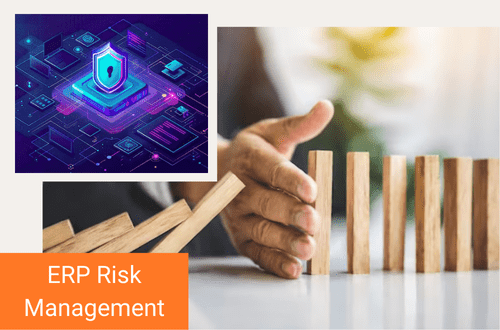Picture this: it’s 3 AM, the world is asleep, but my phone buzzes. Not a social media notification, but a critical alert from our ERP system. My heart does a little flip-flop, but then, a strange sense of calm washes over me. Why? Because I know exactly what it means, and I know we’re equipped to handle it. This isn’t a story about a nightmare; it’s about the quiet, persistent work of ERP IT Risk Monitoring, and how it transformed my professional life from constant anxiety to confident vigilance.
Let me tell you a secret: I wasn’t always this calm. There was a time when the very mention of an ERP system made me break out in a cold sweat.
Picture This: The Nerve Center of Your Business
For those of you just dipping your toes into the world of business technology, let’s start with the basics. An ERP (Enterprise Resource Planning) system is, in essence, the brain of your company. It’s where all the crucial data lives: financial records, customer information, supply chain logistics, human resources data, manufacturing processes – you name it. If your business were a body, the ERP would be its central nervous system, keeping everything coordinated and running.
Sounds powerful, right? It is. But with great power comes great vulnerability. Think about it: if all your most sensitive, mission-critical information is in one place, what happens if that place isn’t secure? The thought used to keep me up at night. I remember one particularly stressful week, we had a minor glitch – a misconfigured user access rule – that almost exposed some sensitive customer data. It was quickly resolved, but the fear lingered. The "what if?" became a constant whisper in my ear.
That’s when I realized we couldn’t just hope for the best. We needed eyes and ears inside that digital brain, constantly watching, listening, and reporting. We needed ERP IT Risk Monitoring.
So, What Exactly Is ERP IT Risk Monitoring? My Analogy
Imagine your ERP system as a magnificent, sprawling castle. It holds all your kingdom’s treasures, your royal decrees, and the livelihoods of your people. Traditionally, you might have guards at the gates, strong walls, and perhaps a few watchtowers. That’s like your basic firewall and access controls. Good, but not enough for the sophisticated threats of today.
ERP IT Risk Monitoring is like adding a whole new layer of intelligent security to that castle:
- The Master Spy Network: It’s a network of hidden sensors and diligent spies within the castle walls, constantly observing every corridor, every vault, every person’s movement. Are they authorized? Are they doing something unusual?
- The Early Warning System: These spies don’t just observe; they report in real-time. If someone tries to force a lock, or an unauthorized person enters a restricted area, an alarm doesn’t just sound; it tells you who, where, and what they were trying to do.
- The Forensic Team: Every action is logged. If something does go wrong, you have a complete, timestamped record of events, allowing you to trace back the issue and understand its root cause.
- The Compliance Officer: It ensures that every rule and regulation your kingdom adheres to (like data privacy laws or financial reporting standards) is being followed to the letter, flagging any deviations immediately.
In simpler terms, ERP IT Risk Monitoring is the continuous process of identifying, assessing, and mitigating potential threats and vulnerabilities within your ERP system. It’s about being proactive, not reactive. It’s about understanding the risks before they become full-blown disasters.
Building Our Digital Watchtower: The First Steps
My team and I didn’t just wake up one day with a perfectly monitored ERP. It was a journey. Our first step was an honest assessment. We sat down and asked ourselves some tough questions:
- What are our most critical assets within the ERP? (e.g., customer financial data, intellectual property, core business logic)
- What are the biggest threats to these assets? (e.g., cyberattacks, insider threats, system misconfigurations, human error)
- What are the potential impacts if these threats materialize? (e.g., financial loss, reputational damage, legal penalties, operational downtime)
This initial risk assessment was eye-opening. It helped us prioritize where to focus our monitoring efforts. We then started exploring ERP security solutions and tools. This wasn’t just about buying software; it was about understanding our system’s architecture, defining what normal behavior looked like, and setting up intelligent alerts for deviations.
I remember the initial overwhelm. There were so many logs, so much data. It felt like trying to drink from a firehose. But we learned to filter the noise, to focus on the signals that truly mattered. We configured our system to flag things like:
- Unauthorized access attempts: Someone trying to log in with incorrect credentials repeatedly.
- Privilege escalation: A user trying to gain access to areas they shouldn’t have.
- Unusual data exports: A large volume of data being downloaded by a user who rarely does so.

